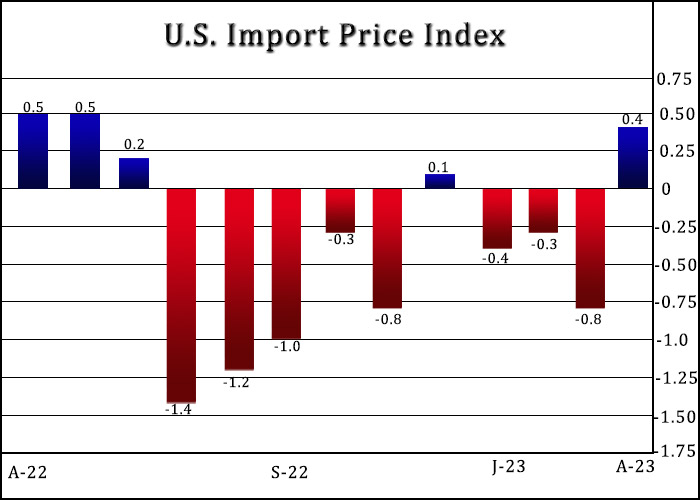U.S. Import Prices Climb 0.4% In April Due To Rebound In Fuel Prices
Reflecting a significant rebound in prices for fuel imports, the Labor Department released a report on Friday showing U.S. import prices increased by slightly more than expected in the month of April.
The Labor Department said import prices climbed by 0.4 percent in April after falling by a revised 0.8 percent in March.
Economists had expected import prices to rise by 0.3 percent compared to the 0.6 percent decrease originally reported for the previous month.
The slightly bigger than expected rebound in import prices came as prices for fuel imports spiked by 4.5 percent in April after plunging by 3.9 percent in March.
Prices for fuel imports increased for the first time since last June, as higher petroleum prices more than offset lower prices for natural gas.
Excluding the surge in prices for fuel imports, import prices were unchanged in April after sliding by 0.5 percent in March.
The Labor Department said higher prices for consumer goods and foods, feeds, and beverages offset decreases in prices for non-fuel industrial supplies and materials and capital goods.
Despite the monthly increase, import prices in April were down by 4.8 percent compared to the same month a year ago.
The year-over-year decrease was unchanged from a revised figure in March and reflected the largest over-the-year drops since May 2020.
“Given our expectation for the Fed to hold rates high until year-end, the import price deflationary cycle will intensify in the months ahead,” said Matthew Martin, U.S. Economist at Oxford Economics.
The report also said export prices rose by 0.2 percent in April following a revised 0.6 percent drop in March. The uptick in export prices matched economist estimates.
Prices for agricultural exports increased by 0.4 percent in April after tumbling by 1.9 percent in March, while prices for non-agricultural exports edged up by 0.2 percent after falling by 0.5 percent.
Compared to the same month a year ago, export prices were down by 5.9 percent in April, reflecting the largest year-over-year drop since May 2020.
Source: Read Full Article

